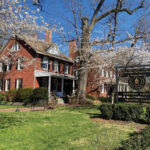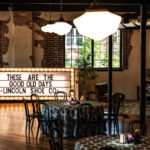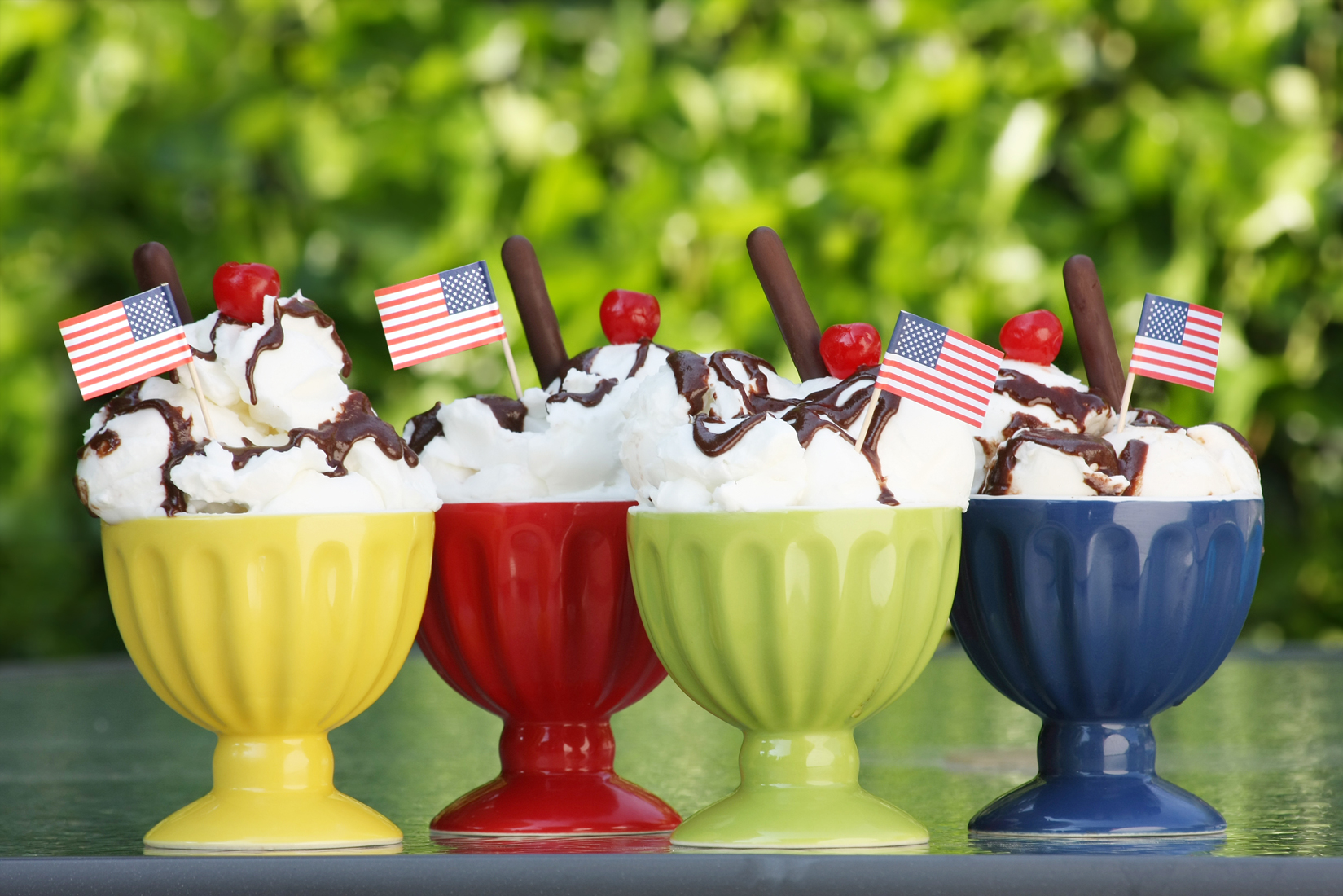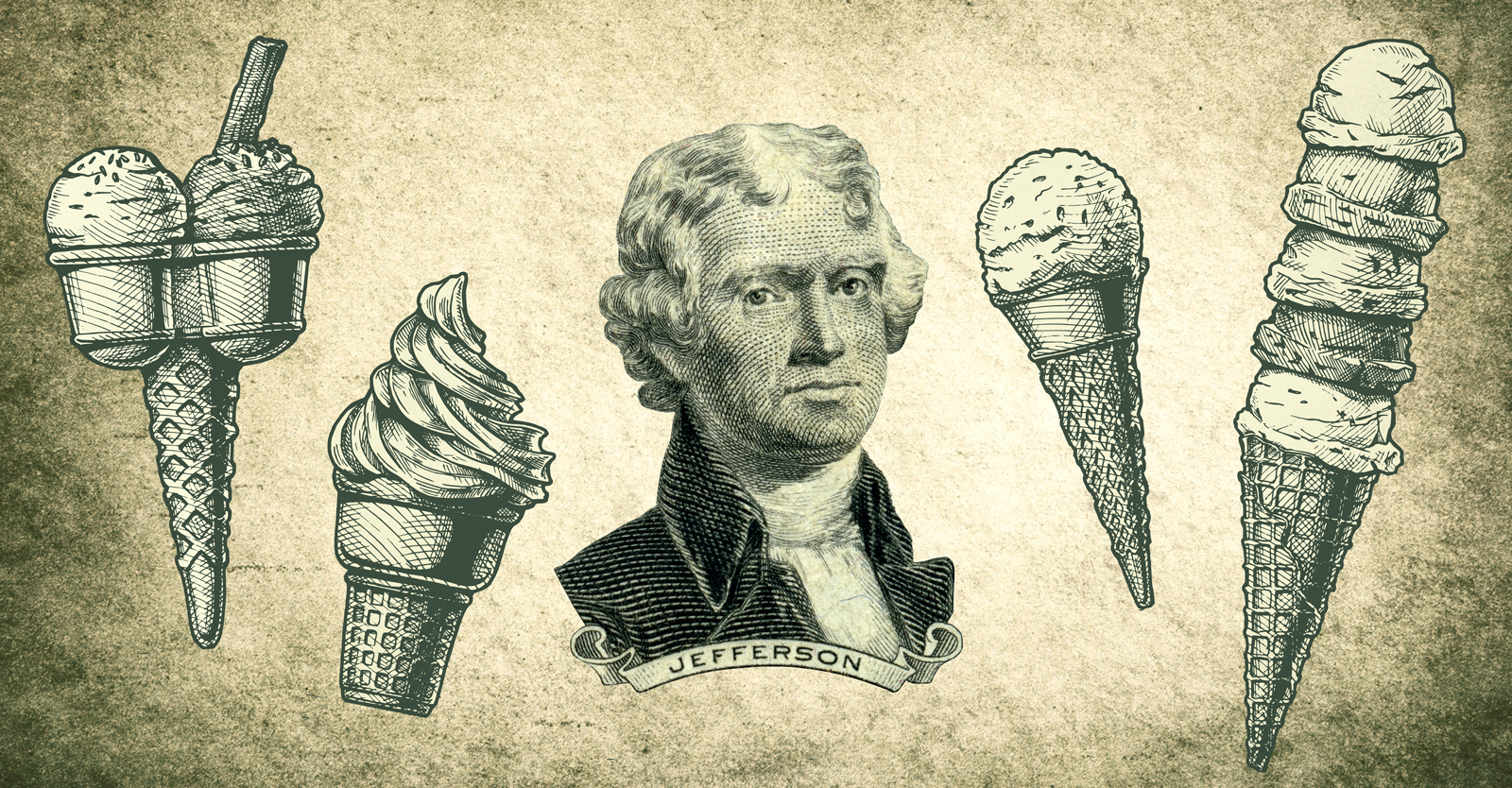George Washington, Thomas Jefferson and James Madison all loved ice cream and served it regularly during the presidential dinners and receptions they hosted. If you happen to visit Mount Rushmore, you can sample Mr. Jefferson’s (as they refer to him in Virginia) ice cream.
First, let’s clear up the legend that Thomas Jefferson introduced ice cream to America. Just as the legend that George Washington chopped down a cherry tree is just that, a legend, so too is the claim that Jefferson introduced ice cream to America. According to historians at Monticello and the Smithsonian, in truth, it’s only partially correct: his recipe for vanilla ice cream is regarded as being the first-known ice cream recipe recorded by an American. Apparently, Jefferson loved ice cream so much that before leaving France to return to America, he copied the recipe (down to the most minute detail) in his own hand. It’s one of 10 recipes written in Jefferson’s hand that survives and is now in safekeeping at the Library of Congress. In brief, the recipe called for “2 bottles of good cream; 6 yolks of eggs; 1/2 pound of sugar; and a stick of vanilla. In Jefferson’s estimation, vanilla was the dealbreaker in determining the ice cream’s taste, prompting him to source the beans from Madagascar.
It was during his service in France (1784-89), that Jefferson developed a taste for ice cream. French cookbooks began sharing recipes for ice cream in the late 17th century, while the English joined the fan club in the 18th century. As for American cookbooks, the honor of providing a recipe is credited to Richard Briggs, whose The New Art of Cookery was published in Philadelphia in 1792. However, the roots of ice cream date back to ancient times, as the Romans sent enslaved people and servants into the mountains to obtain snow and ice that could be used to create their favorite treat, chipped ice (is that the inspiration for Italian water ice?). During the 12th century, the Chinese developed a taste for frozen dairy concoctions.
Through the centuries, ice cream was regarded as a dessert for the wealthy. Writing in Smithsonian Magazine, John L. Smith pointed out that to make ice cream, a person required a cow (whose milk was needed for growing children), sugar (an imported product), eggs (there goes breakfast) and salt. Access to an ice source (a river or lake) was also necessity. The ice then needed to be properly stored for it to endure until warm-weather months. Time was also a drawback, as leisure was all but nonexistent.
When Jefferson returned to America, he not only had the recipe in his possession, but also four ice molds and numerous tools for making the confection. His fondness for ice cream prompted Jefferson to have an ice house built at Monticello (ice was cut from a nearby river). He had his chef learn how to make ice cream. During his presidency (1801-09), he regularly served it at dinners and receptions. Jefferson’s favorite serving method was to surround the ice cream with warm pastry, one that prompted Senator Samuel Latham Mitchell to call the taste sensation a “curious contrast.”
As for George Washington, Smith reports that he was introduced to ice cream by Virginia’s colonial governor. He soon began buying accoutrements such as molds, an ice cream “machine” and serving pieces, including 36 ice pots that held small servings of the treat that exhibited a more liquid-like consistency than modern-day ice cream. Washington so loved ice cream that records at Mount Vernon show that one summer he spent $200 on his hobby, which equates to more than $6,000 in today’s economy. He and his wife, Martha, loved to experiment with adding flavor to ice cream and often utilized the fruit that grew in Mount Vernon’s orchards and gardens.
Ice cream became a part of the Washingtons’ style of entertaining at Mount Vernon and during his term of office (1789-1797). Martha Washington’s Friday evening receptions became known for serving ice cream and lemonade to guests, one of whom was often Abigail Adams, the wife of John Adams, who was the country’s vice president. According to Smith, while Mrs. Adams developed a taste for ice cream, during the Adams’ tenure in The White House (1797-1801), they preferred to serve Apple Pan Dowdy, a pie/cobbler dessert that was popular in their native New England.
Then, there are James and Dolley Madison, who both loved ice cream. They purchased many of the necessities (and niceties) that were needed to make and serve ice cream, which became a mainstay for dinners and receptions that were held at Montpelier and at The White House (1809-17). She loved to experiment with flavors, and it was reported that her favorite ice cream was made with oysters.
Dolley gained the reputation as being the “most charming and consummate hostess in Washington.” Her interests were varied and included fashion and baking (she was renowned for her cakes). Her style and talents prompted businesses to begin pairing her name and image with anything having to do with entertaining and hospitality. For example, the Dolly Madison Bakery advertised its products as being “fit for a socialite, affordable for everyone.” During the 20th century, ice cream became the product most associated with her name (somehow Dolley became Dolly) and the brand survived through mergers and liquidations into the early years of the 21st century. The brand was last owned by a dairy in New York, which appears to have closed.
As for Jefferson’s ice cream, credit for its revival goes to Carvers’ Café, which is located at the Mount Rushmore National Memorial in South Dakota. In 2013, the café’s personnel began working with Pride Dairy in Bottineau, North Dakota, to recreate the recipe. While the task met with success, it wasn’t without challenges, as the dairy and the memorial are 500 miles apart. Nevertheless, Pride vowed to serve its customer and since then, more than 500,000 dips of Jefferson’s ice cream have been enjoyed by the café’s visitors as well as at the Memorial Team Ice Cream Station.
Two interesting historical tidbits to add: Dolley Madison gained the admiration of the nation, when, on the night of August 24, 1814, as The White House was being set aflame by British troops, she spearheaded the effort to successfully remove the famed Gilbert Stuart portrait of George Washington. It’s believed that Dolley would have resorted to destroying the portrait rather than allow it to be confiscated by the British.
On July 4, 1826, as the nation was celebrating Independence Day, two men who signed the Declaration of Independence and went on to serve as the president of the young nation, lay dying. Thomas Jefferson and John Adams passed within five hours of each other on that day.







SHARE
PRINT